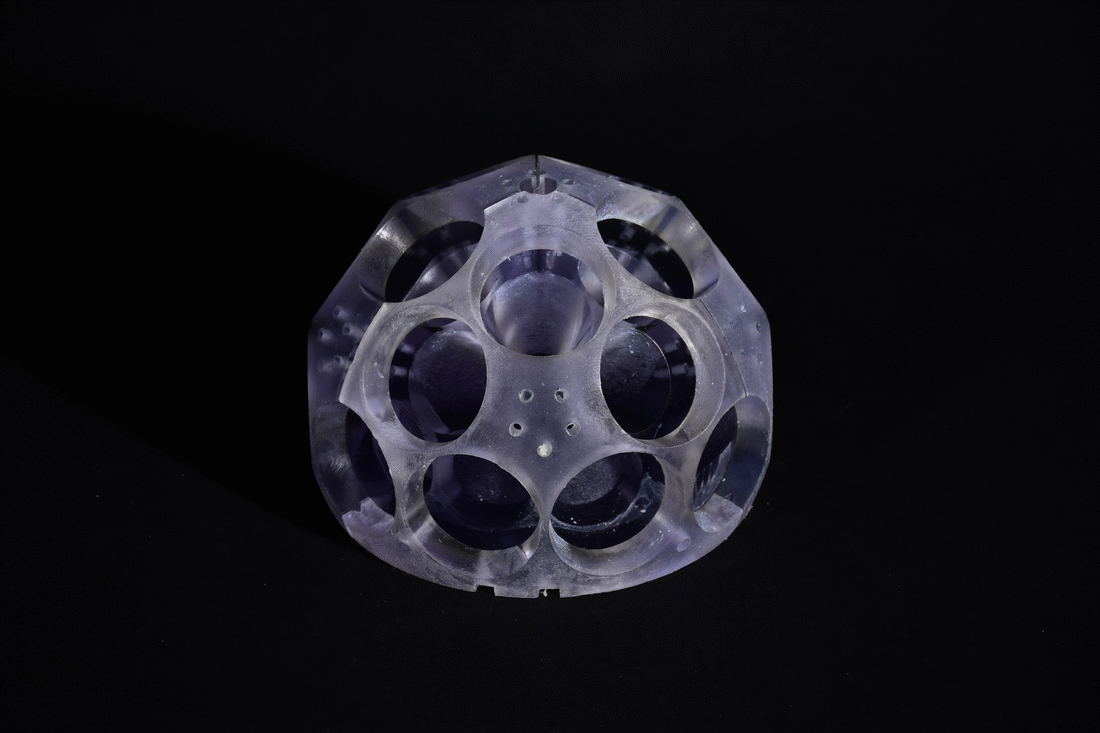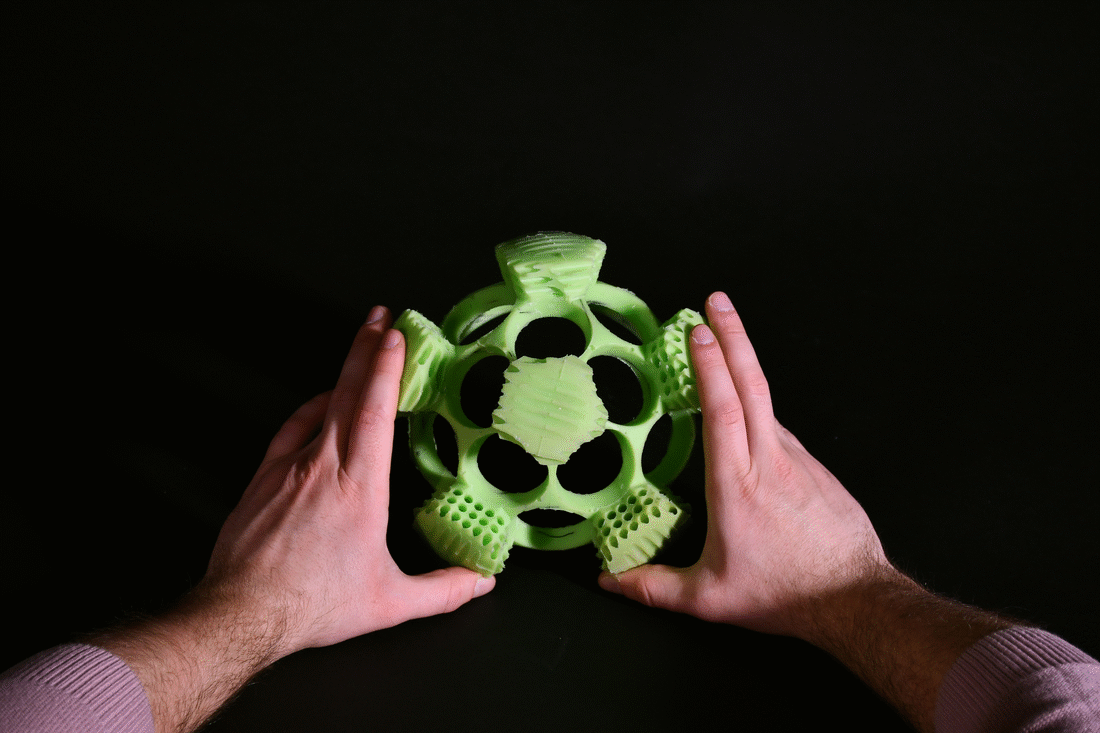HELMETIC
A Collapsible Helmet Design with Auxetic Abilities
Harvard University, Graduate School of Design
Wyss Institute at Harvard
Location: Cambridge, MA/USA
Type: Product Design, Prototyping (Academic)
Metrics: 11″x 8.5″x 5”, 420 Grams, Silicone Based Rubber
Year: 2018
Instructors: Jonathan Grinham, Joanna Aizenberg
Supervisor: James Weaver (Harvard SEAS)
Team: Meric Arslanoglu, Edgar Rodriguez, Michael Bell,
Daniela Teran, Anna Vasileiou
“Helmetic” is a lightweight, compactable helmet for the urban commuter, which is designed for “Nano Micro Macro: Adaptive Material Laboratory” course. This project comprises the concept development, design research, and branding strategy for a collapsible helmet. The goal of the design was to introduce the geometrical properties of auxetic structures such as shock absorption for producing the first collapsible consumer-oriented helmet.
Auxetic structures exhibit considerable deformations in solids, such as beams, resulting in non-linear strain-displacement relations. The auxetic behavior of a surface is accomplished through buckling and hinging. The form of the perforations, including shape, scale, and spacing determines the behavior of the multiple compliant “hinges”.
Auxetic structures exhibit considerable deformations in solids, such as beams, resulting in non-linear strain-displacement relations. The auxetic behavior of a surface is accomplished through buckling and hinging. The form of the perforations, including shape, scale, and spacing determines the behavior of the multiple compliant “hinges”.








CONCLUSION: [_report:]
Testing the abilities of various patterns and materials through the lens of hinged tessellations and auxetic structures was the key in the design process. Based on the research of auxetic structures, the project aims to examine how material gradients may add new opportunities to the tunability of responsive structures. After extensive market research, the adaptation of auxetic structures to a collapsible helmet created the focus point.
The final prototype is compactable to the size of an average water bottle. While 420 grams of silicone rubber has been used, an estimated $7 cost for full assembly is expected.